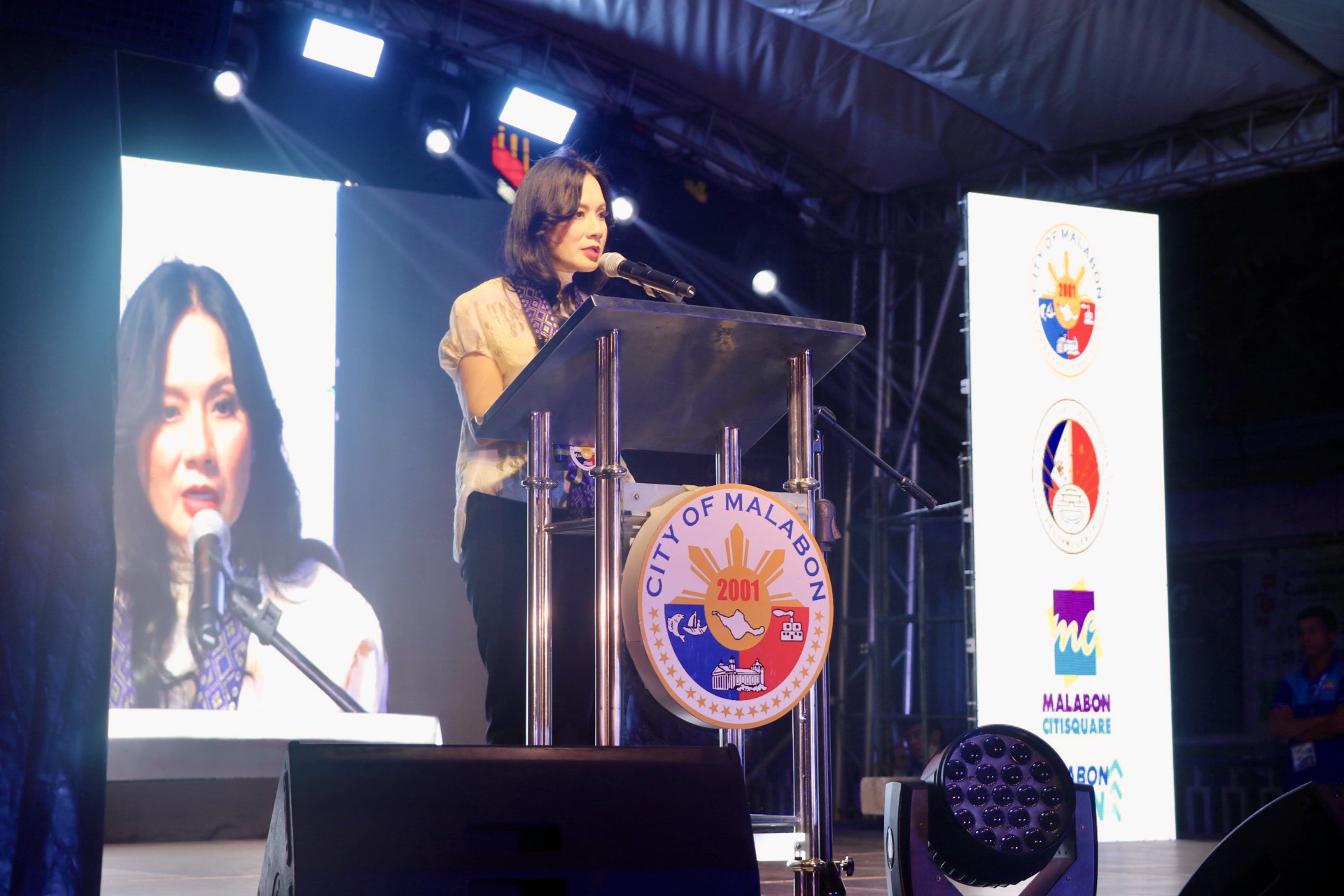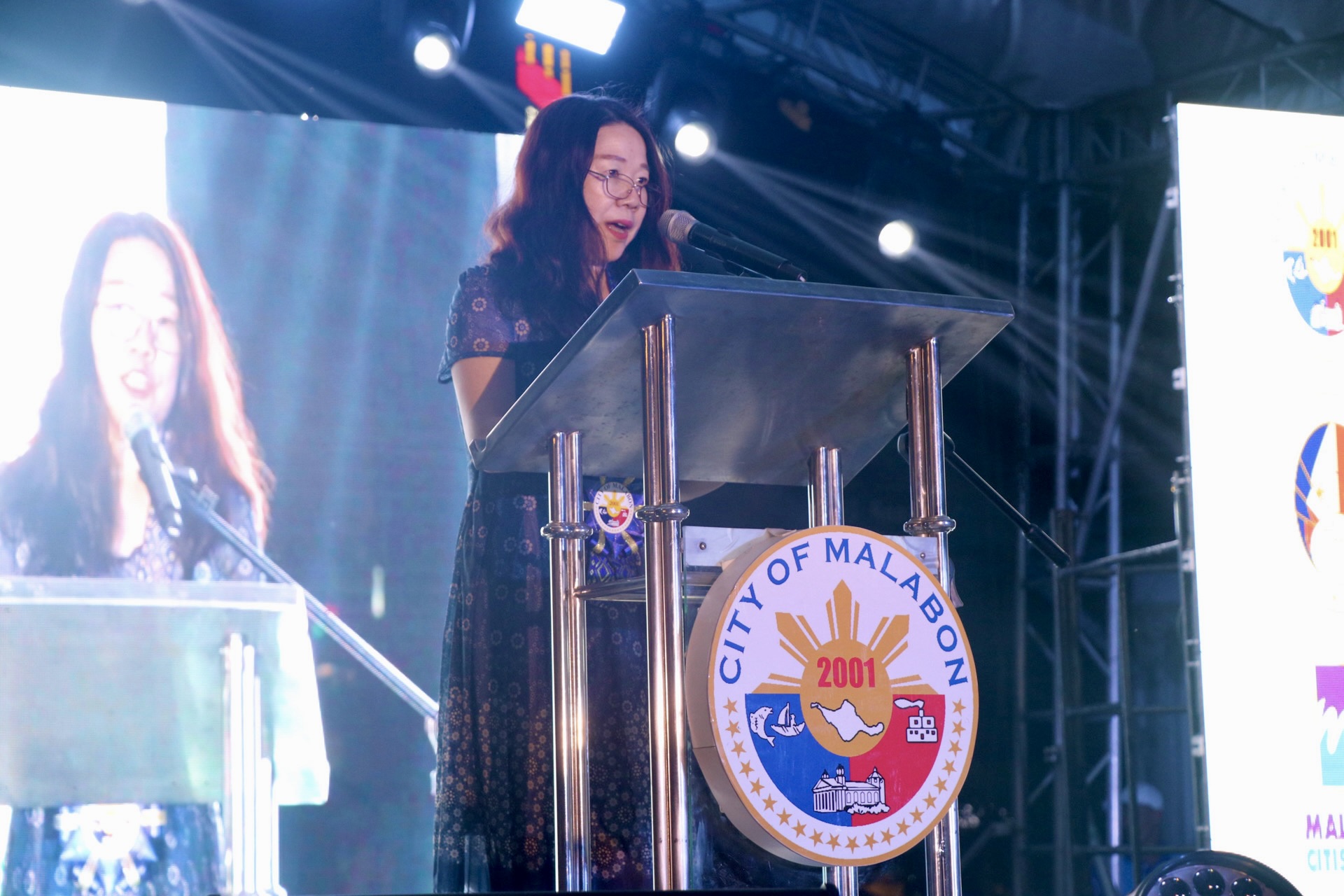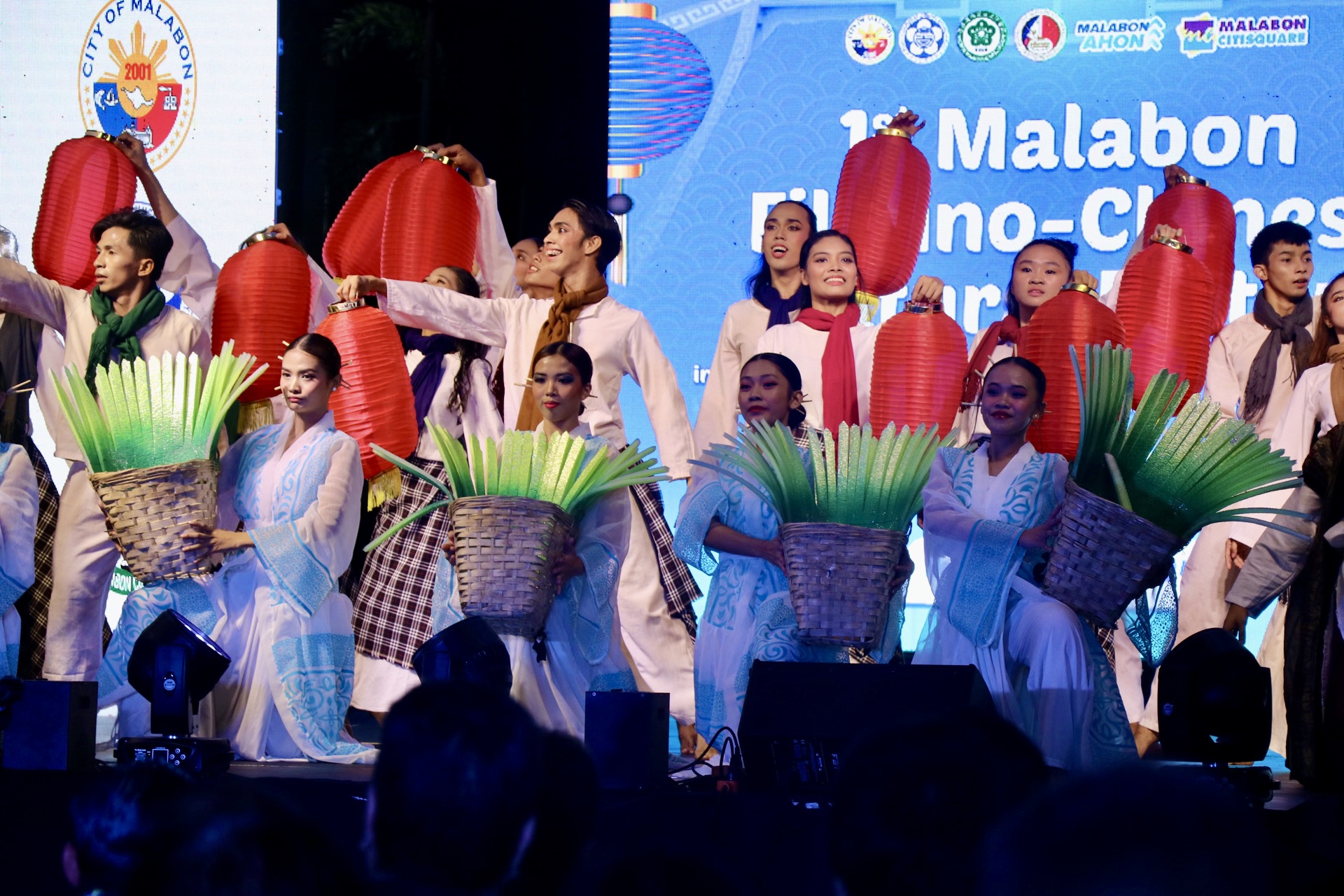Malabon City Mayor Jeannie Sandoval and Cultural Counselor of the Embassy of the Republic of China in the Philippines lead the conduct of the 1st Filipino-Chinese Cultural Festival in the city. (Photo by: Janna Pineda/PIA-NCR)
The city of Malabon has launched the inaugural Filipino-Chinese Cultural Festival, enjoining the local Filipino-Chinese community to celebrate cultural diversity that is built on the friendly relations between the Philippines and China.
The festival, aimed at showcasing the shared cultural heritage and fostering unity, featured various performances and exhibitions highlighting the rich Filipino and Chinese traditions.
From intricate food displays to vibrant cultural presentations, the event served as a platform for cultural exchange and appreciation.
The highlight of the festival is the ceremonial unveiling of the Filipino-Chinese Friendship Arch in Malabon as a symbol of friendship and good relationship. This will be located in C4 Road in Barangay Longos.

Mayor Jeannie Ng Sandoval (center) and Cultural Counselor Huang Yaping (2L) lead the unveiling of the projected Filipino-Chinese Friendship Arch in Malabon alongside Malabon First Gentleman Ricky Sandoval (1L), City Administrator Dr. Alexander Rosete (1R), and a representative from the Philippine Chinese Chamber of Commerce and Industry Inc. (PCCCI)- E-Commerce Chapter. (Photo by Janna Pineda/ PIA-NCR)
In her opening message, Malabon City Mayor Jeannie Ng Sandoval emphasized the significance of the festival in bridging historical connections between the Filipino and Chinese communities towards fostering a spirit of mutual understanding and respect.

Mayor Jeannie Ng Sandoval delivers welcome remarks to kickstart the Filipino-Chinese Cultural Festival. (Photo by Janna Pineda/PIA-NCR)
“Isang malaking tagumpay ang ating nagawang pag-aambag sa pagsasama ng ating mga kultura sa paglulunsad natin ngayon ng Filipino-Chinese Cultural Festival. Ang pagkakaroon ng ganitong klaseng pagtitipon ay nagbibigay daan sa atin upang masusing pag-usapan ang kahalagahan ng ating kultura at mas lalong palalimin ang ating pagkakaisa kasama ng ating mga kaibigan sa Filipino-Chinese community,” said the mayor.
(The launch of the Filipino-Chinese Cultural Festival is a huge success in contributing to the mingling of our culture. Having this kind of gathering will pave the way for us to dwell on the importance of our culture and further deepen our unity together with our friends in the Filipino-Chinese community.)
“Layunin nating mapalaganap ang pag-unawa at pagpapahalaga sa bawat isa. Sa pagkilala sa ating mga tradisyon, mas lalo nating maiintindihan ang ating sarili at ang ating mga kapwa. Nais nating maging daan ang pagsasama natin dito sa festival tungo sa mas mataas na antas ng kaunlaran,” she added.
(It is our goal to broaden our understanding and appreciation towards one other. By recognizing our traditions, we can further understand ourselves and our fellows. We want this festival to serve as a way towards a more advanced development.)
Huang Yaping, cultural counselor of the Chinese Embassy in Manila, graced the occasion where she underlined the importance of such initiatives in strengthening people-to-people ties.

Cultural Counselor Huang Yaping of the Embassy of the People’s Republic of China to the Philippines underscores the strong bilateral ties between two countries. (Photo by Janna Pineda/ PIA-NCR)
“People-to-people and cultural exchanges is one of the four key areas of cooperation between two countries. It is an important foundation of our traditional friendship,” said Yaping.
“Looking ahead, China and the Philippines are a community with a shared future. Therefore, solidarity and mutual support will still be the dominant pillar of our bilateral relations,” she further stated.
Cultural performances
The earliest manifestation of the strong ties between the Philippines and China can be traced back to the Maritime Silk Road which previously served as a thoroughfare of cultural exchange through trade and commerce activities or kalakalan.

Tanghalang Bagong Sibol Dance and Theater Company from the Malabon National High School narrates the Filipino-Chinese cultural relations through a performance. (Photo by Janna Pineda/PIA-NCR)
In 1958, this connection was further strengthened through the establishment of the Malabon Chinese School for naturalized overseas Chinese students residing in the city. The Filipinization of Chinese Schools in 1973 later caused the institution to change its name to Philippine Malabon Cultural Institute (PMCI).
This move allowed the Filipino and Chinese youth to coexist in the pursuit of education and social responsibility. It also served as an opportunity to welcome non-Chinese students to learn and understand the cultural landscape of China.
PMCI played a central role in the festival on behalf of the local Filipino-Chinese community in Malabon. Elementary and high school students showcased their talents in singing and dancing as they convey appreciation for both cultures.
